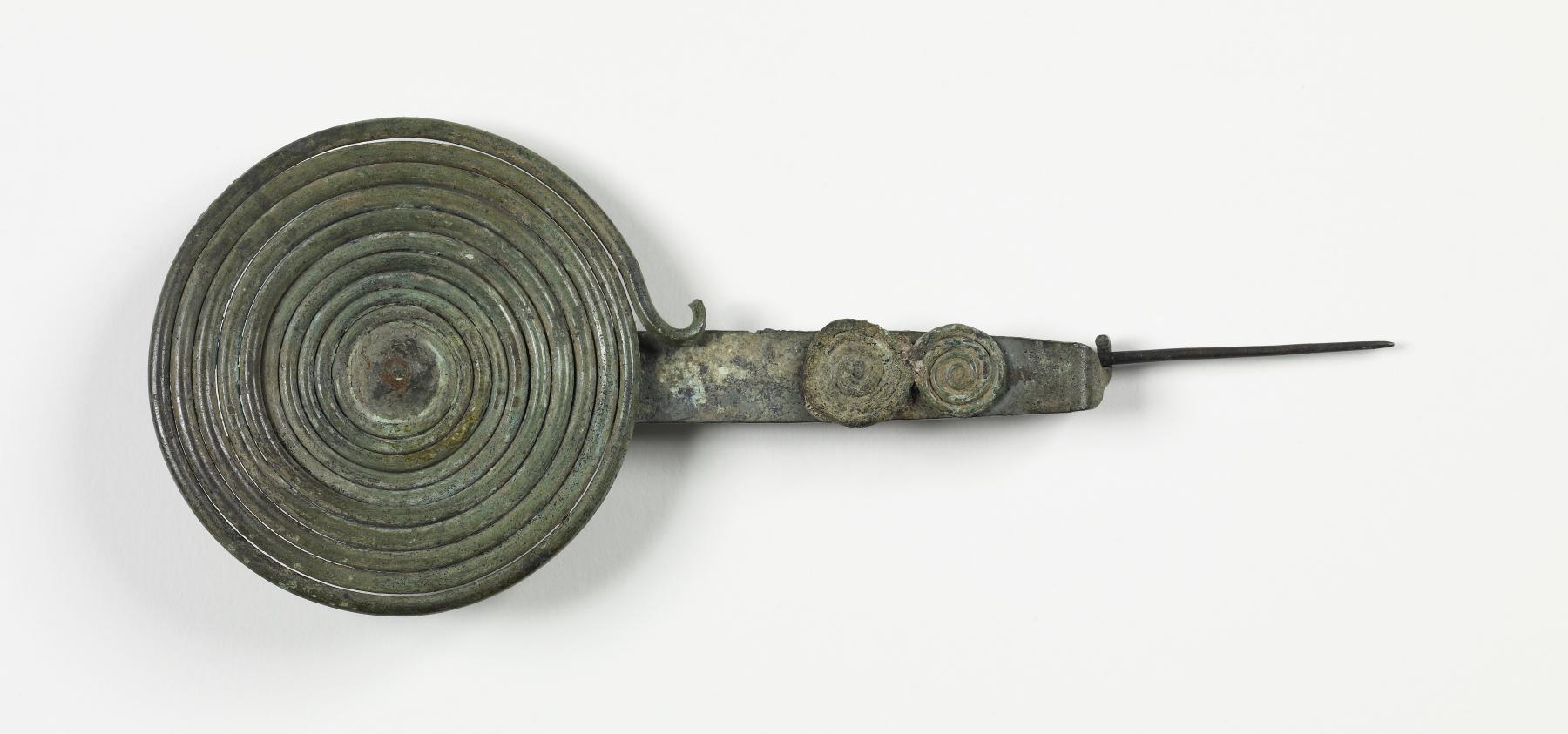Spiral Fibula
Spiral decorative elements reached Greece by the 9th century BC and were enormously popular in both Greece and Italy throughout the Geometric period. Oversized ornaments of bronze, including belts, necklaces with massive beads and pendants, bracelets, and particularly pins, or "fibulae," have been found in graves and in sanctuaries as personal dedications. The fibulae were constructed much like our modern safety pins, with a spring for tension and a catchplate to hold the pin in place. They were often worn in pairs on the shoulders to secure garments.
Provenance
Provenance (from the French provenir, 'to come from/forth') is the chronology of the ownership, custody, or location of a historical object. Learn more about provenance at the Walters.
Henry Walters, Baltimore [date and mode of acquisition unknown]; Walters Art Museum, 1931, by bequest.
Exhibitions
| 1995 | The Allure of Bronze. The Walters Art Gallery, Baltimore. |
Geographies
Italy (Place of Origin)
Measurements
H: 9 5/16 x W: 3 11/16 x D: 1 1/16 in. (23.7 x 9.4 x 2.7 cm)
Credit Line
Acquired by Henry Walters
Location in Museum
Accession Number
In libraries, galleries, museums, and archives, an accession number is a unique identifier assigned to each object in the collection.
In libraries, galleries, museums, and archives, an accession number is a unique identifier assigned to each object in the collection.
54.165




